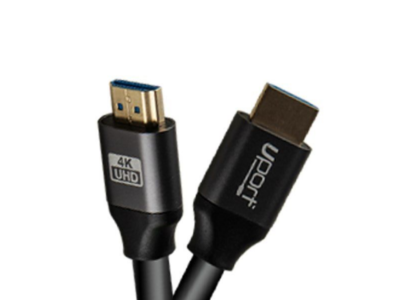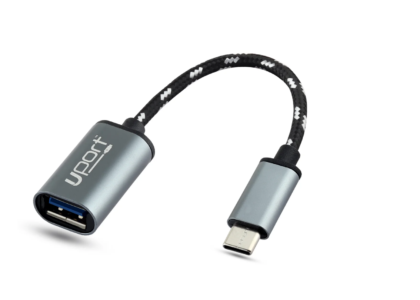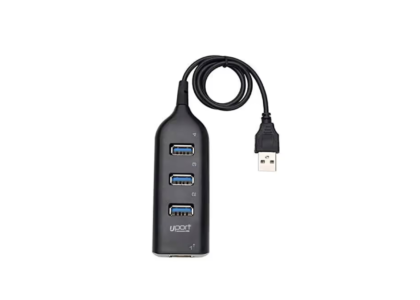With the advent of modern technology, USB Type-C has become a versatile and widely used connector, capable of transferring data, charging devices, and even transmitting video signals. If you want to connect your laptop to an HDMI TV using a Type C USB cable, it’s possible, but it requires some additional hardware. In this blog, we’ll guide you through the process and explain everything you need to know about using a Type C USB cable to connect to an HDMI TV.
Understanding USB Type-C and Its Capabilities
What is USB Type-C?
USB Type-C, commonly referred to as USB-C, is the latest standard for USB connectors. It’s known for its small, reversible design, which means it can be plugged in either way, unlike its predecessors. USB-C is capable of supporting various functions, including:
- Data Transfer: Fast data transfer speeds up to 10 Gbps (USB 3.1).
- Power Delivery: Can charge devices, including laptops, with up to 100W of power.
- Video Output: Supports video output protocols such as DisplayPort and HDMI.
Why Use USB-C to HDMI?
Using a USB-C to HDMI connection allows you to:
- Expand Your Display: Mirror your laptop screen or extend it to a larger display.
- Stream Media: Watch videos, play games, and view photos on a bigger screen.
- Professional Use: Deliver presentations or use a larger screen for productivity.
Required Hardware
To connect your laptop to an HDMI TV using a USB-C cable, you need a USB-C to HDMI adapter or cable. These adapters convert the video signal from the USB-C port to an HDMI-compatible signal. Here’s what you’ll need:
- USB-C to HDMI Adapter: A small device that connects your USB-C port to an HDMI cable.
- USB-C to HDMI Cable: A single cable with a USB-C connector on one end and an HDMI connector on the other.
Step-by-Step Guide to Connect Your Laptop to an HDMI TV
Step 1: Choose the Right Adapter or Cable
When selecting an adapter or cable, ensure it supports the features you need, such as 4K resolution if your TV and laptop support it. Popular brands like Anker, Belkin, and UGREEN offer reliable options.
Step 2: Connect the USB-C Adapter to Your Laptop
- Plug the USB-C End: Insert the USB-C end of the adapter or cable into your laptop’s USB-C port.
- Secure Connection: Ensure the connection is firm to avoid any interruptions.
Step 3: Connect the HDMI Cable to Your TV
- Plug the HDMI End: Insert the HDMI end of the adapter or cable into an available HDMI port on your TV.
- Select the Right HDMI Input: Use your TV remote to switch to the correct HDMI input channel that matches the port you used.
Step 4: Configure Display Settings
- Windows: Right-click on the desktop and select “Display settings.” Here, you can choose to mirror your display, extend it, or use only the TV as the primary display.
- Mac: Go to “System Preferences” > “Displays” and select the “Arrangement” tab to configure your display options.
- Adjust Resolution: Ensure the resolution is set to match the capabilities of your TV for optimal display quality.
Step 5: Test the Connection
- Play Media: Open a video, presentation, or any media file to check the connection.
- Sound Settings: If you want audio to play through your TV, ensure that the sound output is set to the HDMI device in your laptop’s sound settings.
Tips for a Smooth Experience
Use High-Quality Cables and Adapters
Investing in a good quality USB-C to HDMI adapter or cable can prevent connection issues and ensure better video and audio quality. Poor quality adapters may result in a laggy connection or lower resolution.
Update Your Drivers
Ensure your laptop’s drivers are up to date. This includes graphics drivers and any relevant USB-C or Thunderbolt drivers, as updates can resolve compatibility issues and enhance performance.
Check Compatibility
Before purchasing an adapter or cable, verify that your laptop supports video output through the USB-C port. Some older or budget laptops may not have this capability. Refer to your laptop’s specifications or manufacturer’s website for confirmation.
Proper Handling
Handle the cables and adapters with care. Avoid bending the cables sharply or putting strain on the connectors to prolong their lifespan.
Conclusion
Connecting your laptop to an HDMI TV using a Type C USB cable is a straightforward process once you have the right equipment. By following this guide, you can easily expand your display, stream media, or enhance your productivity with a larger screen. Remember to invest in high-quality adapters or cables and keep your drivers updated for the best experience. Embrace the versatility of USB-C and enjoy the seamless connectivity it offers.
For more information on compatible devices and the latest in USB-C technology, keep an eye on tech blogs and manufacturer announcements.






